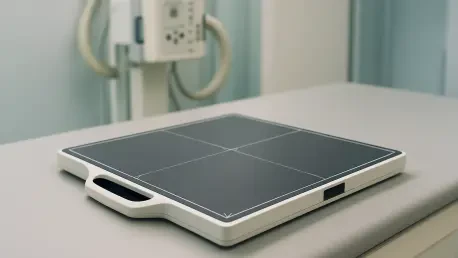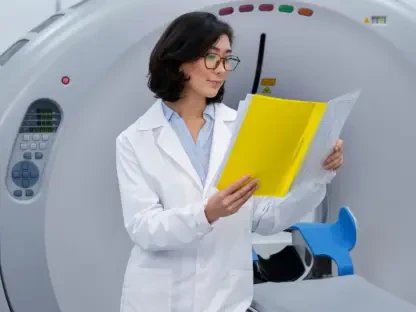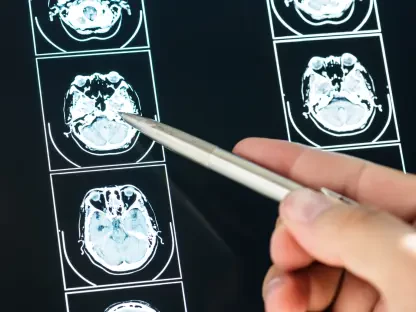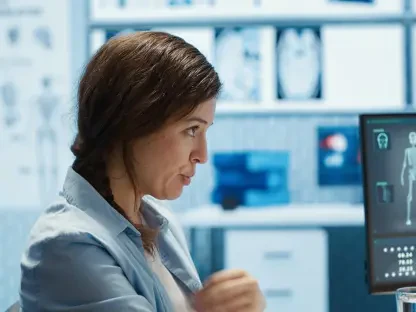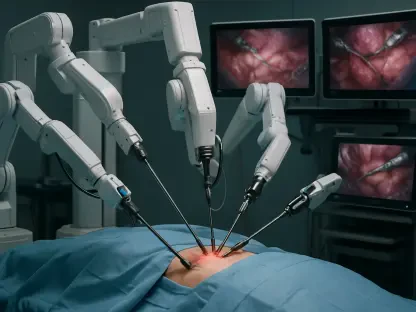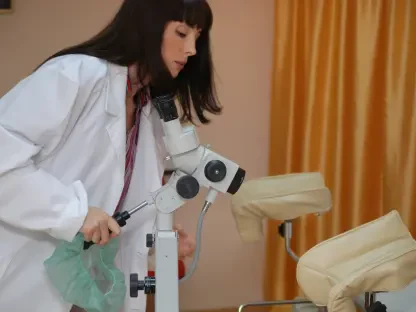In an era where precision and safety are paramount in both healthcare and industrial sectors, the global X-ray detector market emerges as a cornerstone of innovation, enabling non-invasive visualization of internal structures for diagnostics, quality control, and security applications. These detectors, crucial in settings ranging from bustling hospitals to high-security checkpoints and intricate manufacturing plants, are transforming how professionals approach complex challenges. With a projected compound annual growth rate (CAGR) of 5.9% through 2035, this market is poised for significant expansion, driven by relentless technological advancements and a rising demand across diverse industries. The ability of X-ray detectors to convert radiation into visible images has become indispensable, supporting critical decisions in medical imaging and beyond. As research and development efforts push the boundaries of what’s possible, the market stands at a pivotal moment, balancing emerging opportunities with persistent obstacles. This dynamic landscape reflects a broader shift toward digital solutions and smarter technologies, promising to reshape standards of efficiency and accuracy in the years ahead.
Technological Advancements Fueling Market Growth
The backbone of the X-ray detector market’s evolution lies in groundbreaking technological advancements that have redefined industry standards. Digital flat panel detectors, which account for over 65% of the market’s revenue share, have eclipsed traditional analog systems by delivering superior image quality, reducing radiation exposure, and accelerating processing times. This digital shift has streamlined workflows in healthcare and industrial environments, offering instant image availability and seamless compatibility with modern digital systems. The impact of such innovation is evident in the enhanced precision and safety these detectors bring to critical applications, setting a new benchmark for operational efficiency across sectors.
Beyond the dominance of digital detectors, the integration of artificial intelligence (AI) and machine learning (ML) marks a transformative leap forward. These technologies enhance capabilities like image reconstruction and automated anomaly detection, improving diagnostic accuracy by as much as 30%. In medical settings, AI-driven tools support radiologists in identifying subtle abnormalities, while in industrial applications, they ensure meticulous quality control by spotting defects with unprecedented precision. This convergence of AI with X-ray technology not only boosts performance but also positions detectors as vital components in the era of smart diagnostics and automated inspections, driving sustained market growth.
Healthcare Sector as the Dominant Demand Driver
Healthcare applications represent the largest segment of the X-ray detector market, comprising approximately 75% of total demand worldwide. This surge is propelled by the increasing prevalence of chronic diseases such as cancer and cardiovascular conditions, coupled with a globally aging population that requires more frequent diagnostic imaging. The emphasis on early disease detection and preventive care has led hospitals and clinics to invest heavily in advanced X-ray detectors, ensuring better patient outcomes through timely and accurate diagnoses. As healthcare systems prioritize cutting-edge solutions, the reliance on these detectors continues to grow, reinforcing their role as indispensable tools in modern medicine.
Additionally, the push for routine screenings and improved access to diagnostic services in developed regions amplifies this demand. In areas with robust healthcare infrastructure, policies supporting preventive care initiatives drive the adoption of high-quality imaging systems. Meanwhile, emerging economies are witnessing a gradual uptick in investments to modernize medical facilities, further expanding the market’s reach. The healthcare sector’s unwavering need for reliable, efficient X-ray detectors underscores its position as the primary catalyst for market expansion, with implications for both patient care and broader public health strategies over the coming years.
Transformative Trends Shaping Industry Direction
Several forward-looking trends are actively reshaping the trajectory of the X-ray detector market, aligning with broader technological and societal shifts. Portable and wireless detectors stand out, with a projected CAGR of 8.5%, due to their unparalleled flexibility in patient positioning and suitability for point-of-care imaging in remote or emergency scenarios. These systems enable healthcare providers to deliver critical diagnostics outside traditional settings, while industrial users benefit from enhanced mobility in inspections. Retrofit digital solutions also play a significant role, particularly in developed markets where they constitute 40% of new deployments, offering a cost-effective alternative to full system replacements by upgrading existing equipment with modern capabilities.
Sustainability and customization are increasingly central to market dynamics as well. Manufacturers are prioritizing energy-efficient detectors that reduce operational costs by up to 25% compared to older models, aligning with global efforts to minimize environmental impact. Simultaneously, specialized detectors tailored for niche applications like dental imaging, mammography, and veterinary diagnostics address specific clinical and operational needs. The rise of cloud-based storage and remote diagnostic capabilities further transforms the landscape, allowing radiologists to collaborate across distances and ensuring diagnostic accessibility in underserved regions. These trends collectively signal a market evolving toward greater adaptability and efficiency.
Barriers to Market Expansion and Adoption
Despite its robust growth potential, the X-ray detector market grapples with significant challenges that hinder widespread adoption. High upfront costs for advanced digital systems present a formidable barrier, particularly for smaller healthcare facilities in developing regions where budgets are constrained. These financial limitations often delay the transition from outdated analog equipment to modern solutions, impacting the quality of diagnostics and inspections. Moreover, the economic burden extends beyond purchase costs, as maintenance and upgrades for sophisticated systems add to long-term expenses, creating hesitation among potential adopters in resource-limited environments.
Further complicating market growth are operational and regulatory hurdles. Integrating new detectors with existing infrastructure demands specialized technical expertise, driving up costs and posing logistical challenges. Stringent regulatory frameworks, while essential for ensuring safety and quality, often result in lengthy approval processes that delay product launches and innovation cycles. Additionally, a persistent shortage of trained radiographers and technicians limits the effective utilization of cutting-edge systems, while ongoing concerns about radiation exposure necessitate continuous design improvements. These barriers collectively underscore the need for strategic solutions to balance innovation with accessibility.
Future Opportunities and Strategic Insights
Looking ahead, the X-ray detector market brims with opportunities for stakeholders to tap into emerging needs and applications. Beyond traditional medical imaging, sectors such as food safety inspection, electronics manufacturing, and even archaeological research are opening new revenue streams for manufacturers. The rise of medical tourism in developing economies also drives demand for state-of-the-art imaging facilities, as countries position themselves as hubs for affordable, high-quality healthcare. Developing specialized detectors for vulnerable populations, such as pediatric and neonatal patients, addresses critical safety gaps and enhances market appeal through targeted innovation.
Technological convergence offers another promising avenue, with hybrid imaging systems combining X-ray detection with other modalities gaining traction for comprehensive diagnostics. The shift toward value-based healthcare models, which prioritize accuracy and patient outcomes, further encourages the adoption of premium detectors that deliver superior clinical value. To capitalize on these opportunities, industry players must focus on strategic partnerships, invest in scalable solutions for diverse markets, and align with evolving healthcare trends. By navigating these pathways, the market can unlock its full potential, ensuring that advancements in X-ray technology continue to improve lives and industries worldwide.
